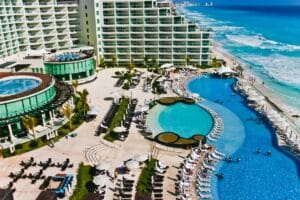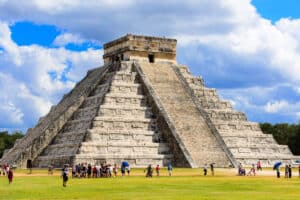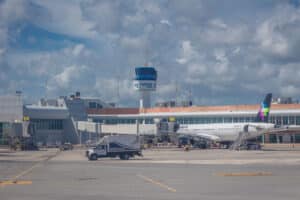Welcome to Monterrey, the capital of Nuevo León.
Its name translates to “King Mount” or “King Mountain” in Spanish, referring to the massive mountains surrounding the city.
Monterrey is a dream destination for adventurous travelers — delicious food, rich culture, bustling urban life, and magnificent mountains to gaze at while sipping your first cup of morning coffee.
But how safe is Monterrey for tourists?
The answer is simple: exercise increased caution, and you’ll be just fine! Fasten your seatbelts, and let’s learn everything about Monterrey’s safety in 2024.
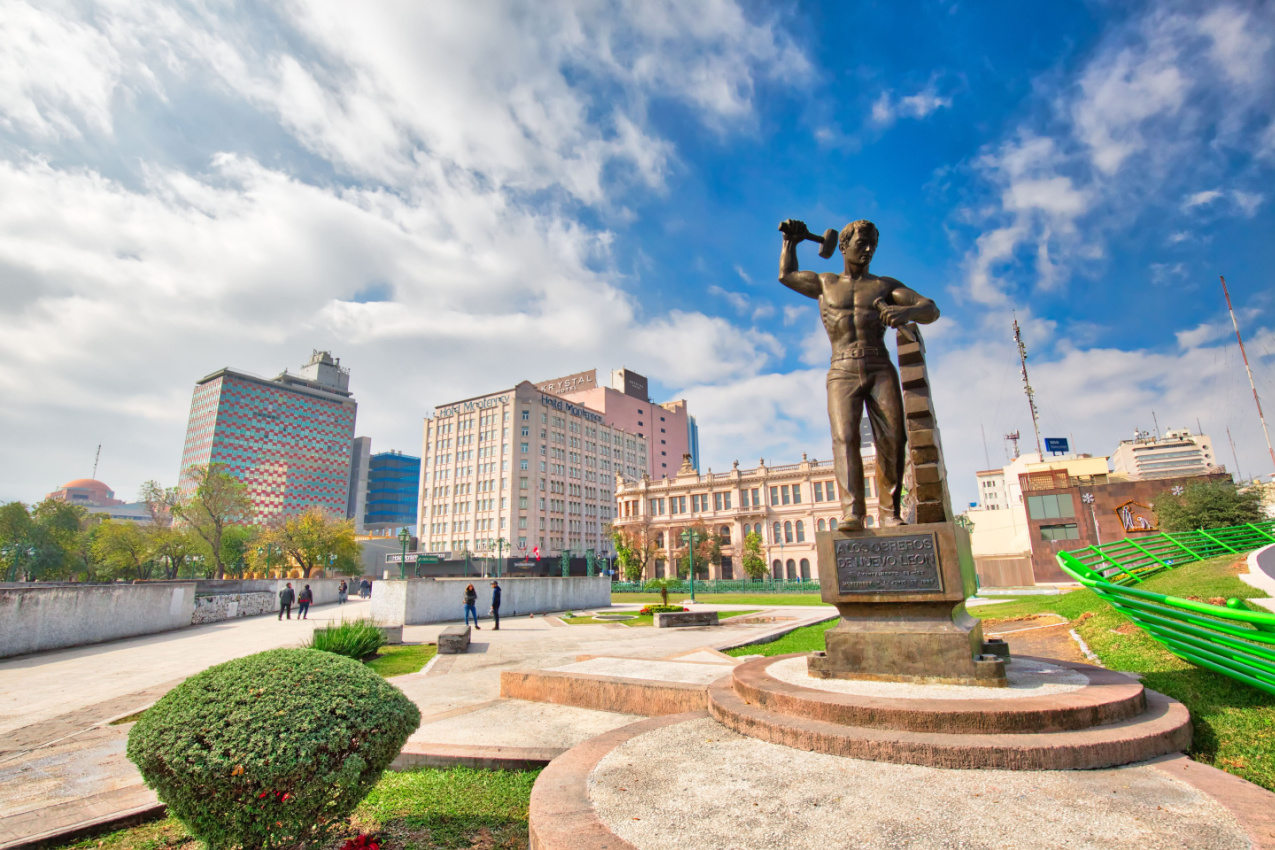
Are you planning a last minute trip to Monterrey? We’ve put together all the resources you’ll need for a fun & safe travel:
🛌 Best & Safest Places to Stay in Monterrey:
👉 Hotel Montserrat Plaza – Outdoor swimming pool, Free WiFi, Free Parking
👉 Casa Campestre VillaReal – Room service, Free WiFi, Outdoor swimming pool
👉 Hotel Los Lagos Centro Vacacional – Swimming Pool, Free WiFi, Family rooms
👉 Centro agroecoturistico las heliconias – Outdoor swimming pool, Free WiFi, Bar
⛱️ Fun Activities & Tours in Monterrey:
👉 Extreme Canyoning in Matacanes from Monterrey
👉 Monterrey Top Highlights with a Local Guide
👉 Cola de Caballo Guided Half-Day Experience from Monterrey
🚗 Best & Safest Monterrey Transportation Services:
👉 Airport Pickup Service – Welcome Pickups
👉 Rent a Car – DiscoverCars
🙏 Stay Safe While Travelling:
👉 Safetywing (for medical insurance)
👉 VisitorsCoverage (for trip insurance)
Unveiling the Reality: A Comprehensive Look at Monterrey Crime Rates
Monterrey is the third most populous city in Mexico after Mexico City and Guadalajara. It has a population of 5.12 million.
A city of this size cannot be crime-free. According to statistics, Monterrey has a crime rating of 48.02, which is moderate.
Monterrey boasts lower crime rates than other popular destinations in Mexico. For instance, Mexico City has a crime rating of 67.95, whereas the beautiful Caribbean attraction, Cancun 56.16.
Based on the common crimes in Monterrey, tourists may fall victim to thefts, fraud, and threats. Violent crimes rarely happen to tourists, but they aren’t impossible.
This is why the U.S. government advises tourists to exercise increased caution when traveling to this city. This may seem like a standard precautionary measure, but it doesn’t mean you should be carefree. Monterrey can be dangerous if you aren’t cautious.
Navigating the New Normal: Ensuring COVID-19 Safety in Monterrey
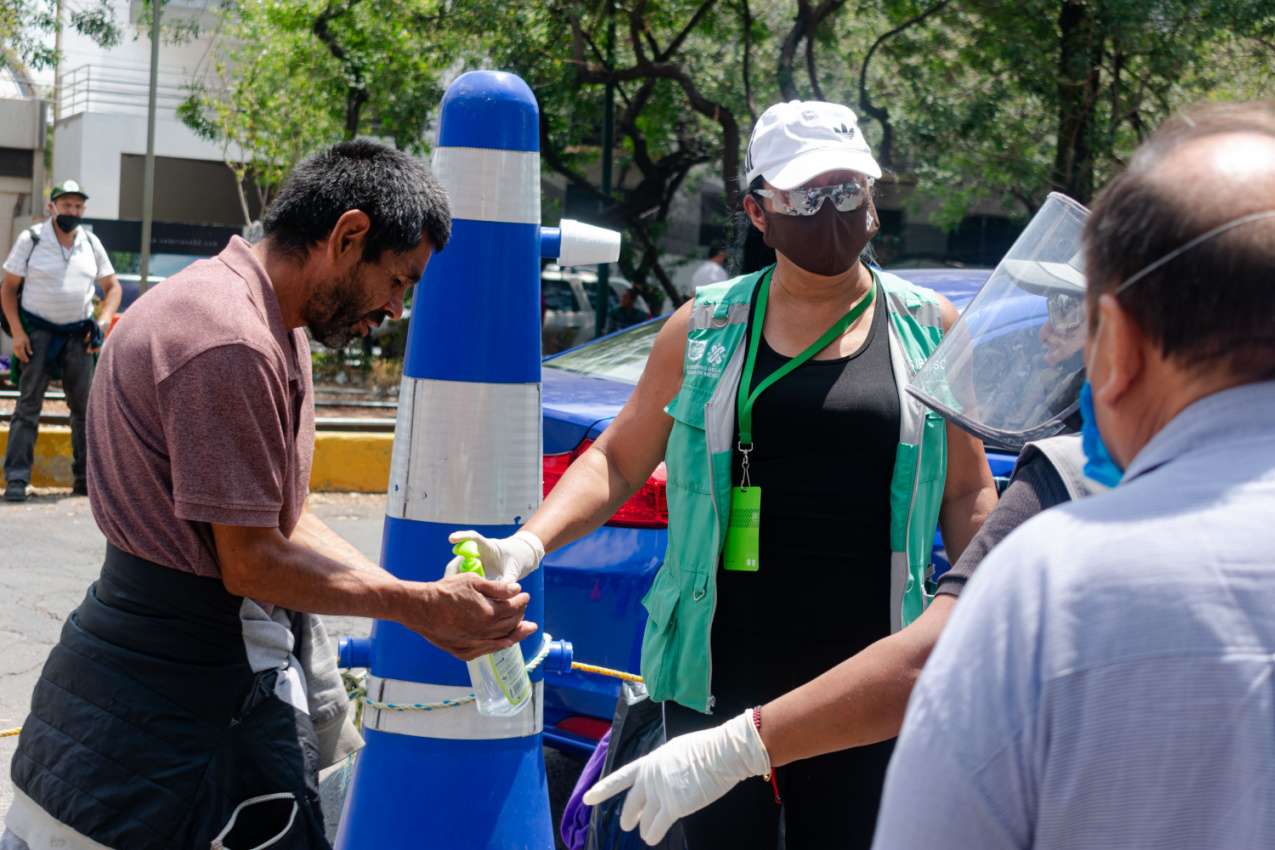
Mexico doesn’t require a negative test or COVID-19 vaccines for tourists to enter Monterrey.
Nevertheless, COVID-19 persists. If tourists want to get tested for COVID-19, they can do so at the airport or in private laboratories and clinics. COVID-19 testing is also available in some hotels.
If you want to do a PCR test, the cost ranges from 950 to 4500 MXN ($53 to $250). Viral antigen tests are cheaper, ranging from 200 to 1000 MXN ($11 to $55).
Monterrey has lifted the restrictions on wearing masks. However, tourists and citizens need to exercise caution and do their best to prevent the virus from spreading. This includes maintaining social distance, washing your hands regularly, and sneezing or coughing into the inside of your elbow.
A little reminder, the main symptoms of coronavirus are shortness of breath, temperature, frequent coughing, fever or chills, fatigue, muscle pain, headache, and loss of taste and smell. If you suspect you have any of these symptoms, you should cancel your trip to Monterrey and seek medical attention.
Perils of Nature: The Risk of Natural Disasters in Monterrey
In Monterrey, two natural disasters are possible: hurricanes and earthquakes. Let’s learn more about them.
Hurricane Information and Precautions
Monterrey is an inland city protected by the Sierra Madre Oriental mountain range, so it’s not directly in the path of hurricanes.
Nevertheless, the city can still be affected by heavy rainfall and flooding during the rainy season, which typically occurs from May to October.
For example, in September 2022, there were floods in Nuevo Leon. In Monterrey, 350 homes were damaged, and one man went missing. Another storm occurred in 2020, bringing severe rain, flooded streets and residences, and a report of a missing individual.
It’s always a good idea to remain up to date on local weather conditions and, if necessary, adjust your trip to Monterrey. You can go to the National Hurricane Service for further information regarding recent hurricanes in Mexico and Monterrey.
Earthquake Information and Prevention
Monterrey is situated in the Monterrey Microplate, a seismically active zone. As a result, the city may suffer seismic activity occasionally.
However, significant earthquakes with destructive tendencies are uncommon in the area. The usual earthquakes that hit Monterrey are of magnitude 3 or 4. According to the earthquake magnitude scale, these tremors are felt, but the damage is usually minimal.
Nevertheless, travelers should always be aware of fundamental earthquake safety precautions, such as understanding how to “Drop, Cover, and Hold On” during an earthquake.
Staying informed about the latest earthquakes hitting Monterrey is also advisable. To do that, visit the VolcanoDicosvery website or download the 911 CDMX app to your smartphone.
Breathing Safely in Monterrey: Carbon Monoxide Awareness and Prevention
Carbon monoxide is a colorless and odorless gas that can leak inside hotels from faulty appliances, including heating systems, furnaces, gas water heaters, stoves, fireplaces, generators, etc.
If the CO leaks and spreads in the air for longer periods, the people inside will get poisoned by it. The biggest problem is that the gas has no scent, color, or flavor, so our senses are unable to detect it until we notice some of its symptoms.
Early symptoms of CO poisoning include headaches, dizziness, nausea, disorientation, weakness, chest discomfort, and loss of consciousness. Prolonged inhalation of CO can cause paralysis, brain damage, and loss of life.
Fortunately, no one has been fatally poisoned by CO in Monterrey. However, following the catastrophe in Mexico City, where this gas poisoned three visitors in an Airbnb, authorities are requesting that this subject be taken more seriously.
For example, hotels and rental properties should install CO detectors within 10ft of each bedroom. As an added layer of protection, authorities are urging tourists to bring their own CO detectors whenever they travel.
Although there have been no CO poisoning incidents in Monterrey, it’s better to be aware that such a possibility exists.
Monterrey Weather Patterns: What to Expect?
Monterrey’s climate is subtropical, which means that the winter is mild while the summer is quite hot and occasionally rainy.
Monterrey’s dry season lasts from November to March. During this time, temperatures average around 66°F (19°C), with a high of 82°F (27°C). The months with the least rain are December, January, and February, with an average precipitation of 0.6in (15 mm), whereas the hottest month in the dry season is March (82°F/27°C).
The wet season in Monterrey lasts from April to October, bringing frequent downpours and elevated humidity. The month with the most rainfall is September, with an average precipitation of 5.9 (50 mm). The wet season is rainy but also scorching hot. The average temperature revolves around 84°F (29°C), and in the hottest month, August, it may reach as high as 96°F (35°C).
Weather Overview in Monterrey
Summer
The summer season in Monterrey runs from June to August. The weather is extremely hot, with occasional rain showers. The average daily temperature is about 84°F (29°C), whereas Monterrey may reach 96°F (35.5°C) on the hottest days. Summer nights are nice and warm, with temperatures hovering about 74°F (23°C).
Fall
The fall season in Monterrey lasts from September to November. The weather remains hot here, although wet days, particularly in September, may become more prevalent. The average daily temperature will be around 74°F (23°C), with a maximum high of 89°F (31.9°C). At night, the temperature gradually drops, eventually hovering about 65°F (18°C).
Winter
Monterrey’s winter season lasts from December through February. Winter is mild, and snowfall in the city is uncommon, but it may occur in the mountains. The average daily temperature is around 60°F (15°C), with a high of 76°F (24°C). Winter nights are usually 50°F (10°C).
Spring
Monterrey’s spring season runs from March until May. Spring brings in a period of warmer weather, with temperatures gradually rising. The daily average temperature is 76°F (24°C), while on the hottest days, Monterrey can reach 91°F (33°C). Spring nights are warm, with highs of 70°F (21°C).
When Is the Best Time to Visit Monterrey?
The best time to visit Monterrey depends on your travel preferences. Let’s discuss all options.
Monterrey reaches its peak tourism in February, July, and August, so this is ideal if you want to experience the lively atmosphere of the crowds. However, expect to spend more on hotels and air flight tickets.
On the other hand, Monterrey has a low tourist season in November and May, which is ideal for individuals who prefer a more laid-back vacation. Plus, the hotel prices and flight tickets are cheaper.
If you enjoy exceptionally dry, semi-cold weather, then November, December, January, and February are the months for you. However, if you aren’t a winter person and enjoy the blistering sun, you should visit during June, July, and August. Just know to expect some occasional rain as well.
If you ask us, the ideal time for visiting is between May and April. These are the months when you can still enjoy warm weather during the day and cool off during the night. Plus, rain is less likely to fall during these months than in the summer or fall.
Exploring Monterrey Solo or With a Family: Is It a Good Idea?
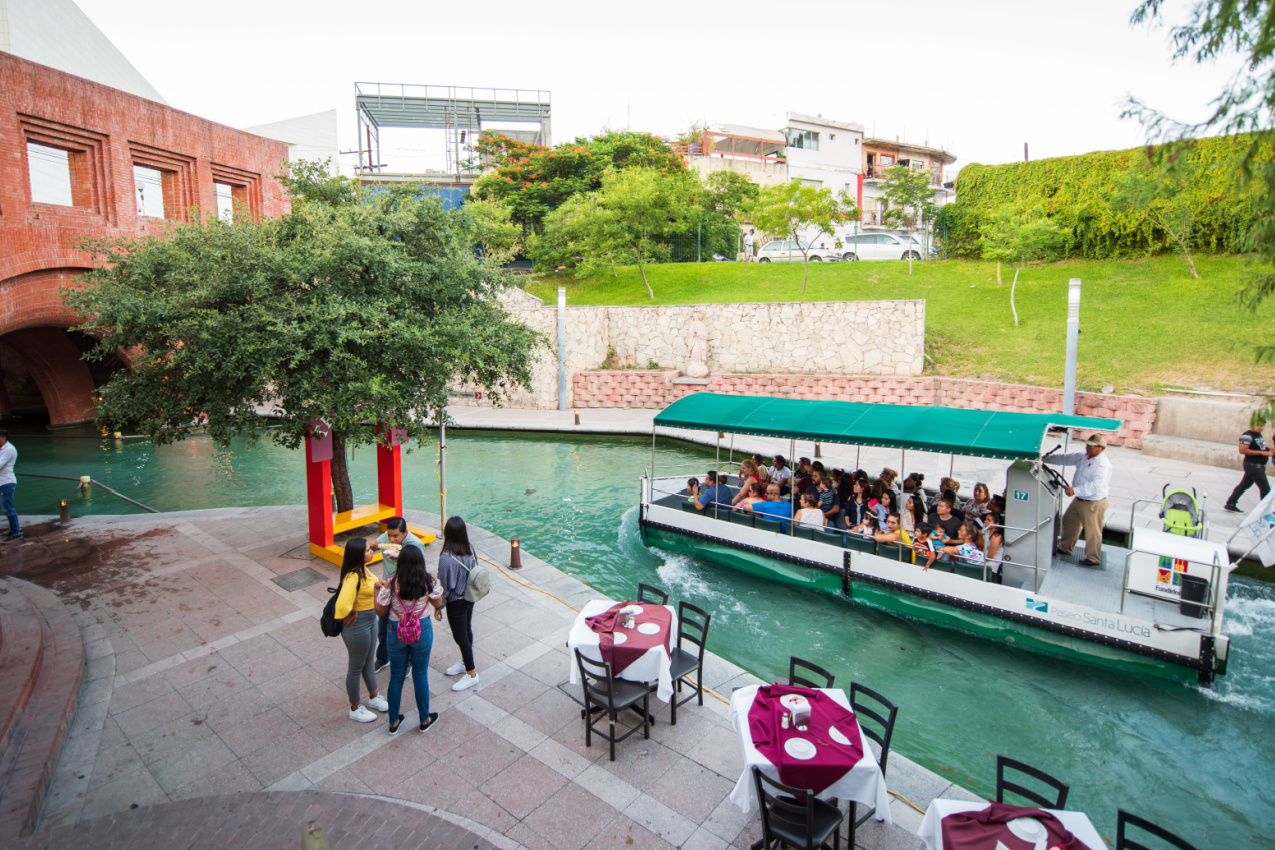
Yes, visiting Monterrey alone or with your family can be a safe, fulfilling, and culturally fascinating experience. However, visiting the city requires increased caution, so your awareness must be at its peak.
Here are the finest tips and tricks on how to stay safe in Monterrey in 2024.
Essential tips for staying safe:
- Blend in and learn some basic Spanish
- Don’t drink tap water — it’s contaminated
- Street taxis may scam you — call DiDi or Uber
- Purchase a Mexican SIM card
- Double-check the reputation of your hotel
- For extra safety, look up the nearest police station
- Write down the emergency numbers: 911 (police), 066 (ambulance), 080 (fire services)
- Have some pesos on hand
Tips for traveling alone:
- Never walk alone at night
- Don’t wander off too far from your hotel
- Stick to well-lit streets
- Avoid going alone to super crowded bars and restaurants
- Don’t give personal information to strangers
- Drink responsibly
- Don’t accept illegal substances
- Don’t draw money from public ATMs — go to the mall or bank
- Don’t wear revealing clothes to avoid unnecessary attention
- Ignore catcallers
- Public transportation is a hotspot for thieves, so keep your valuables close to you
- Be in contact with a friend or family member about your whereabouts
Tips for traveling with your family:
- Pack a medical kit, especially sunscreen
- Never separate from the group
- Keep an eye on your kids at all times
- Rent a car since it’s more reliable than constantly calling a taxi
- Don’t drink and drive
Conclusion
Well, that’s a wrap! We hope you have enjoyed our virtual tour and learned something about how to stay safe in Monterrey in 2024.
Just remember, the key to safe and serene travels is being increasingly cautious. This means that you need to be wary of your surroundings at all times, and if you have a bad feeling about something or someone, do everything you can to get yourself out of danger.
This guide has been a long and bumpy ride, from cartel violence to natural calamities, but we’ve learned a lot along the way! So now it’s time to go out and enjoy the city!
